
The Basics:
- “Arthro” means Joint; Pod – “Foot/limb”
- The most successful animals on Earth – found in air, land, sea and make up ~75% of known living and fossil species.
- Appeared 545 Million Years ago
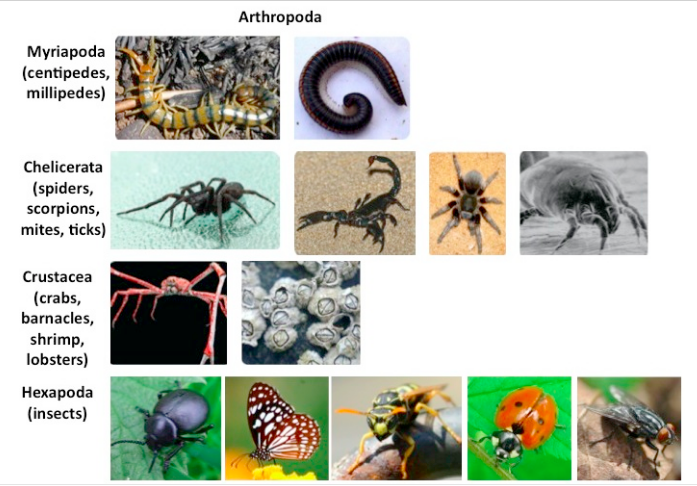
A. Evolution of Body Plan
1. Jointed, Paired Limbs
- Extremely diverse and modified for different functions.
- Segmentation allowed for this specialization.

-
Segmentation:

Evolved from segmented ancestors. Segments have been lost or fused together.
Body Plan usually has three major sections: head, thorax, abdomen:
- HEAD: Has sensory/food manipulation appendages.
- THORAX: Section with jointed limbs for movement
- ABDOMEN: Contains vital organs (heart, reproductive organs, digestive organs)
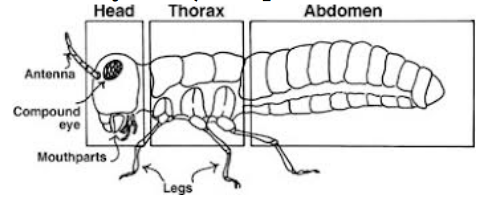
-
Exoskeleton
An outer skeleton found in arthropods. Protects internal muscles, blood vessels, etc.
- Made of chitin (material made up of modified glucose. Also found in fish scales, cell walls in fungi, squid beaks).
- Has be thick, heavy and inflexible – Lobsters/crabs or thin, light, and flexible – Grasshopper joints/wings.
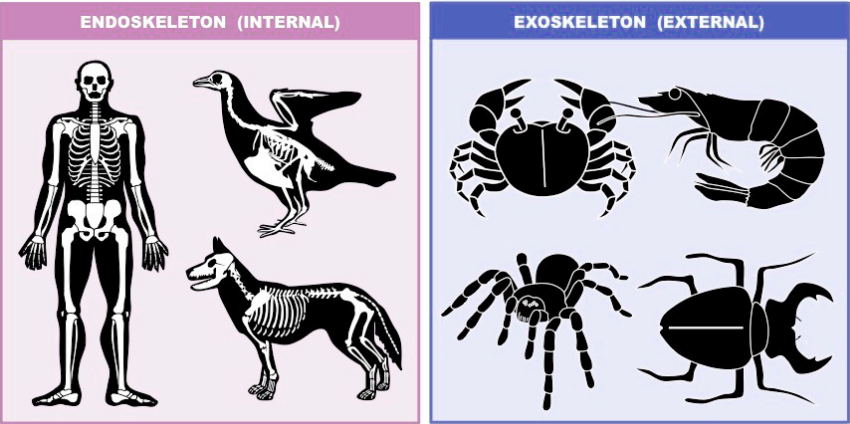

Size limitations:
Largest Terrestrial Arthropod: Coconut Crab! 4.1 kg (9.0 lb) / 1m (3.3 ft) claw-to-claw
Largest Aquatic Arthropod: (Japanese Spider Crab) 19 kg (42 pounds) / 5.5 m (18 feet) claw-to-claw

So how do arthropods grow if their exoskeleton cannot grow?

Molting – The process of shedding, or losing, the rigid exoskeleton to let the organism grow.
In arthropods this is known as Ecdysis.
Dangers of Molting:
- Arthropods shed not just their outer body covering, but their eye surfaces, and even the lining of the internal passageways leading to the respiratory system – body parts can get stuck and ripped off.
- Arthropods can get stuck leaving their old exoskeleton
- Arthropods are soft and vulnerable for many weeks while the new exoskeleton hardens.
4. Bilateral Symmetry
The body plan of arthropods can be divided in half making a right and left side that are mirrors of each other.
B. Feeding and Excretion
Arthropods have a very diverse diet due to their extremely high variation of specialized appendages.
Have a one-way digestive system (runs mouth to anus where undigested food is excreted)
- Developed system: Contains a foregut (pharynx and esophagus to the stomach), midgut (stomach), and hindgut (colon, anus) – much like humans.
Excretion:
- Terrestrial arthropods have malpighian tubules, which collect waste from the blood and add it to undigested food to be excreted.
- This saves water since the liquid and cellular waste is added to the digestive waste and is dry
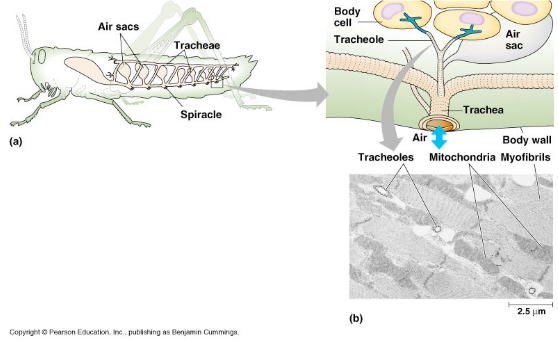
C. Respiration and Circulation
Arthropods possess an open circulatory system consisting of heart and a system of arteries.
Open Circulatory System – Blood is pumped by a heart into the body cavities, where tissues are surrounded by the blood. The blood eventually diffuses back into the circulatory system.
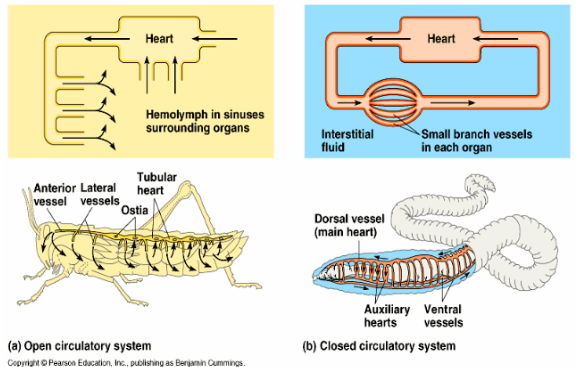
Respiration:
- Aquatic arthropods possess gills for respiration.
- They vary in structure and location but are all outgrowths of integument (skin) and are therefore covered by the exoskeleton (which is thin enough that gas exchange can occur).
2. Terrestrial Arthropods use book lungs and trachea as respiratory organs.
Trachea – Tiny tubes that run around the body to transport gases. (insects)
Spiracle – Opening to the Tracheae from the outside. How gases enter/exit.
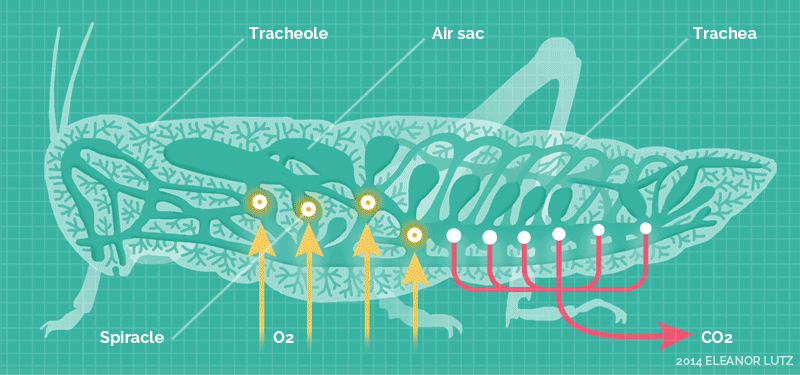
Book Lungs – Found in arachnids. Gases still enter/exit through spiracles, but gas is exchanged in the blood in the “pages” of the lung area, rather than filling a system of trachea (as in insects) .
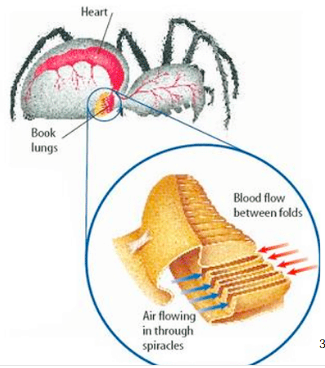
D. Reproduction
- Typically Sexual Reproduction

- Separate sexes in arthropods
- Paired sex organs, or gonads, are connected directly to ducts that open onto the ventral surface (front/belly)
- Internal Fertilization – Sperm is transferred into the female via packets called spermatophores.
Note: Some insects (like Stick Insects) can asexually reproduce through parthenogenesis. Growth and development can occur without fertilization – i.e. female lays eggs that become female without fertilization
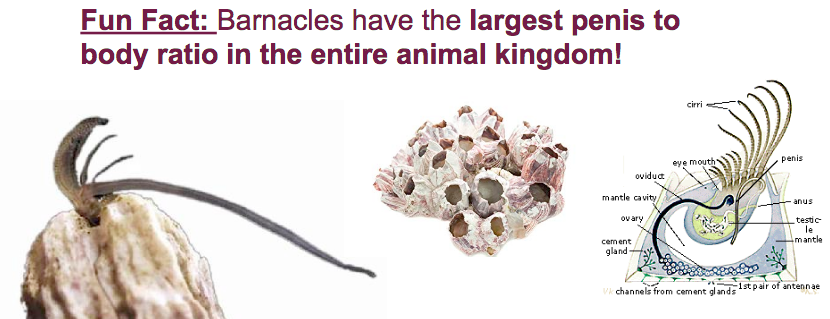
E. Major Groups of Arthropods

Please refer to Subphylums of Arthropoda hand out for more details!
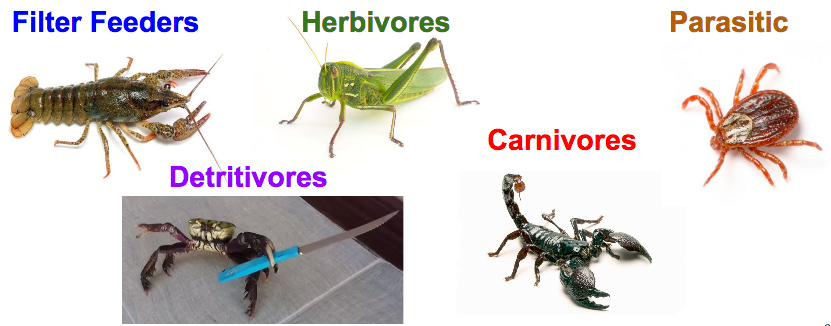
Comments by shaun pletsch